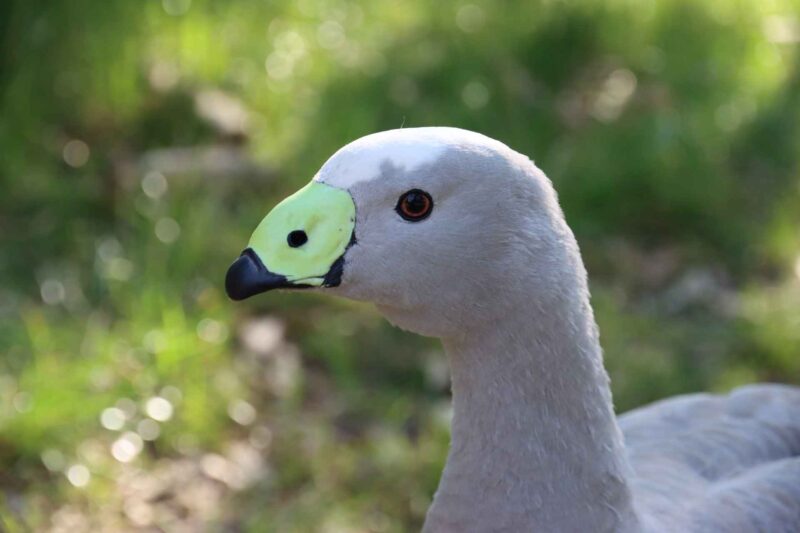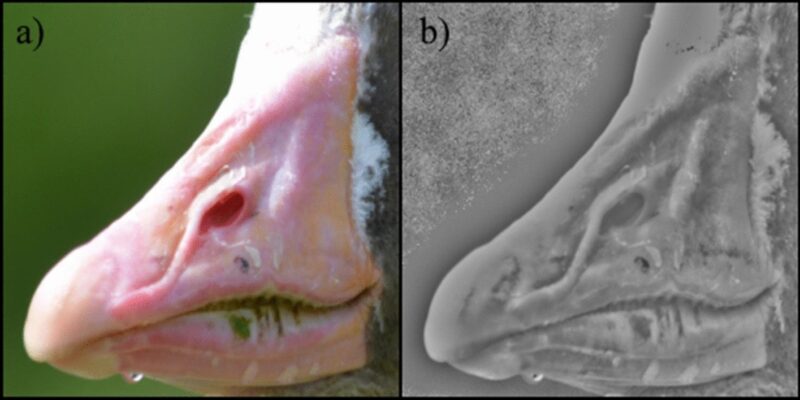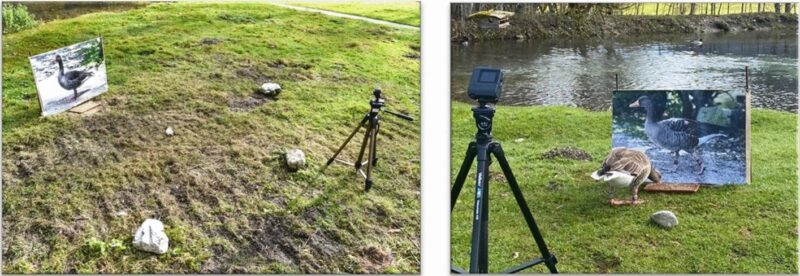
Facial recognition used to study geese
Flinders University – based in South Australia – said on October 2, 2023, that its researchers took part in a facial recognition study, focused on wild Greylag geese. They studied a flock originally investigated in the 1950s by the founding father of animal behavior studies, Austrian scientist Konrad Lorenz. Indeed, the technology provided such good insights, they said, that it’ll soon be used again. This time, the researchers will use it to study a rare goose species in South Australia, called the Cape Barren goose.
Researchers from Flinders and the University of Vienna in Austria used the facial recognition techniques to assess how each bird responded to images. This included images of themselves and other flock mates or partners.
In addition, the researchers said other scientists – and citizen science apps – might benefit from the use of facial recognition technology. Specifically, scientists could use it to help monitor and record endangered wildlife.
The researchers published their peer-reviewed paper on September 27, 2023 in the Journal of Ornithology.

How the study worked
Flinders BirdLab leaders Sonia Kleindorfer and Diane Colombelli-Négrel worked on the software with support from the University of Vienna, University of Veterinary Medicine in Austria and the Konrad Lorenz Research Centre for Behavior and Cognition.
The researchers said that they tested each goose face with lifesize 2D images of members of the Greylag goose flock.
Notably, with 97% accuracy, they correctly assigned each goose face within a photo library containing 6,000 possible matches,
Kleindorfer, who founded Flinders University’s BirdLab 20 years ago, at the University of Vienna in Austria, said:
The team placed life-sized photos in a grassy field to see whether geese behave differently to each image, which they do.
The geese approached the photo of their partner more quickly, gave friendly contact calls and fed for longer. In contrast, when they saw a picture of themselves – a goose they had never seen before – they hissed and took longer to approach food, if they fed at all.
The latest findings into visual cues of individuality give insights into the birds’ social structure. Additionally, they also illustrate how the software to monitor individual faces or body patterns can be monitored using photographs collected in the field. Likewise, this enables researchers to track animal numbers and movements in conservation efforts.

More uses for facial recognition in wildlife studies
Colombelli-Négrel said:
Animal welfare could also be enhanced through the use of photographs in captivity.
For example, a photo might reduce the sense of isolation in a social species held in captivity. Or, it might serve as a ‘soft introduction’ before a new animal is introduced into an enclosure. However, care should be given to avoid photos of a deceased relative, ally or dominant animal in the group.
Perhaps captive individuals in group-living species express reduced anxiety when exposed to a photograph of an unknown and smaller non-specific.
Zoologist Konrad Lorenz used the behavior of the Greylag goose to found the discipline of animal behavior. He received the Nobel Prize in Physiology or Medicine with Nikolas Tinbergen and Karl von Frisch in 1973.
Bottom line: Facial recognition software used to study the social behavior of individual geese in Europe will soon be used to monitor the Cape Barren goose in South Australia.
Read more: Bird migration forecasts get a boost from AI
The post Boo to a goose. Facial recognition used to study wildlife first appeared on EarthSky.
0 Commentaires